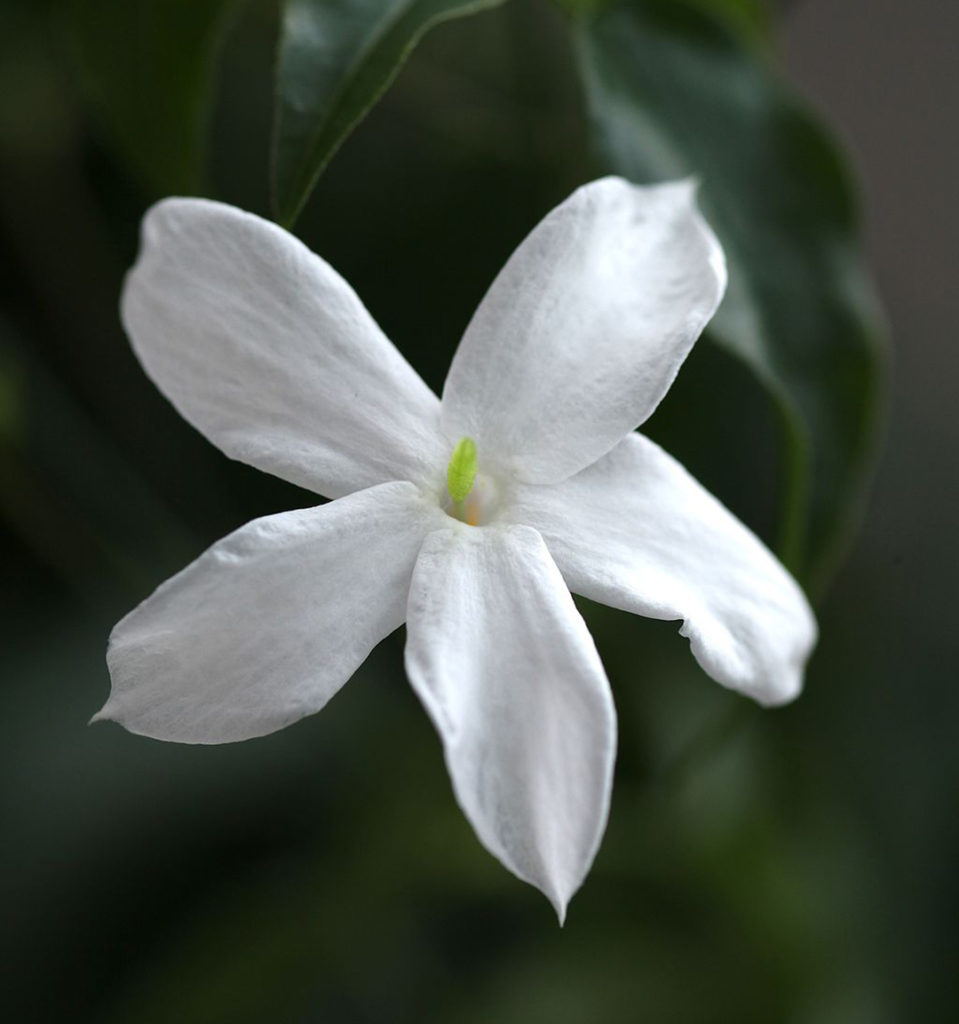
Panama
Jasmine
Jasminum

General Description/Cultural Significance
Famously located in the center of Central America and uniting the American continents, Panama sits between Costa Rica to the west and Colombia to the east. The country is filled with tropical rainforests which cover the majority of the east and its Caribbean coast. Panama’s terrain is so densely populated with diverse species that it has three times the variety of plants as the whole European continent.
The national flower of Panama is the Flor del Espíritu Santo, also known as the Holy Ghost Orchid, Flower of the Holy Spirit, or Dove Orchid, a type of orchid which creates the shape of a dove when it blooms (which in the Roman Catholic tradition is the symbol of the Holy Spirit). There are many different types of orchids throughout Panama, but the strong Roman Catholic faith in Panamanian culture has influenced the adoption of the Flor del Espíritu Santo as Panama’s national flower. The most culturally significant scent is not from this orchid, though. Instead, the jasmine flower is considered the most important scent in the country because of its recognizable, calming smell which is so present in the Panamanian terrain.
The scent of jasmine is a natural anxiety-reducing medication, which in some cases can be as calming as Valium and is commonly used as a sleep aid. On Isla Tobago, an area of Panama nicknamed the “Island of Flowers,” the land is covered with brilliant bougainvillea, hibiscus, and of course jasmine flowers. Cars are not permitted on Isla Tobago and visitors can relax fully and enjoy the sweet aroma on walkways, nature trails, and while lying on white sand tropical beaches.
Climate Change/Conservation Status
Unfortunately, the gentle scent of jasmine is often obscured during Panama’s expanding fire season by the scent of burning rainforests. At 63.4% forested, Panama has the highest amount of forest land in all of Central America, and between 2012-2019 Panama lost 2% of its forest cover totaling over 8,000 hectares (19,800 acres) of loss. Deforestation is Panama’s most significant environmental problem, causing soil erosion and threats to their mangroves.
Extreme weather changes are also impacting one of the country’s (and the world’s) key international trade routes— the Panama Canal, connecting the Atlantic and Pacific Oceans. Droughts are causing high demand for fresh water in the canal’s reservoirs, which are too low on the water supply to make it through a typical dry season. In addition, extreme levels of rainfall cause the canal to be temporarily inoperable for days at a time during the rainy season. These issues put a strain on both the canal operations and the water supply for a country with extremely dry regions where there is often a lack of drinking water for people. In 2023, rainfall was 30% below average causing a dramatic drop in water levels in the country. The uncertainty and disrupting closures of the canal are causing serious economic consequences for Panama as well as for global trade and other countries involved in shipping.
Despite these threats, Panama has made incredible strides in fighting climate change. Panama’s forests capture carbon gas from the air at a rate higher than Panamanians release it, making it a rare carbon-negative country. However much more work will need to be done to preserve its rich biodiversity and range of aromatic plants.
Sources
Burillo, Y., 2022. Panama Leading By Example On Climate Change. [online] Diplomatist. Available at: <https://diplomatist.com/2021/12/14/panama-leading-by-example-on-climate-change/> [Accessed 2 August 2022].
Maloney, A., 2022. Panama’s plan to go green and reforest 1 million hectares by 2050. [online] World Economic Forum. Available at: <https://www.weforum.org/agenda/2021/04/panama-forests-environment-nature-climate-change/> [Accessed 2 August 2022].
Rainforest Foundation US. 2022. Panama – Rainforest Foundation US. [online] Available at: <https://rainforestfoundation.org/our-work/where-we-work/panama/> [Accessed 2 August 2022].
Timberley, J., 2022. The Panama Canal is running out of water. [online] WIRED UK. Available at: <https://www.wired.co.uk/article/panama-canal-climate-change> [Accessed 2 August 2022].

